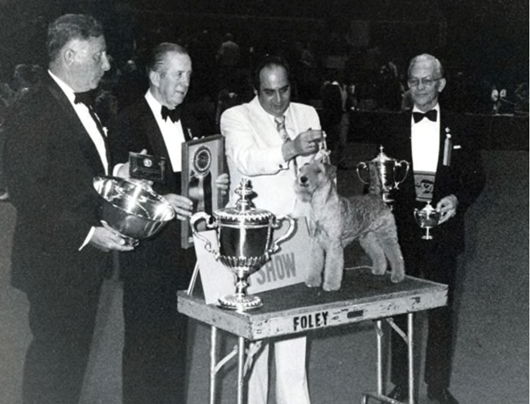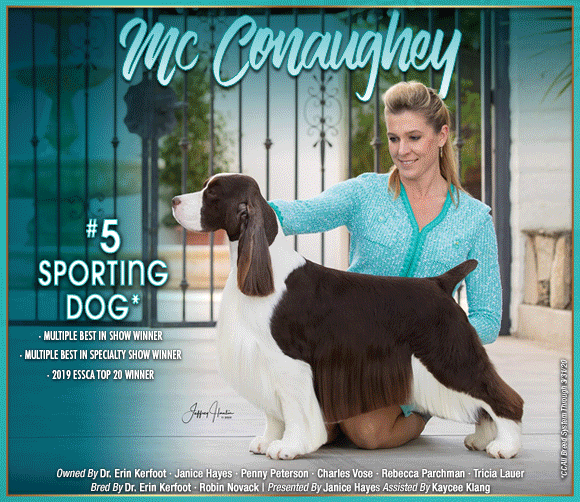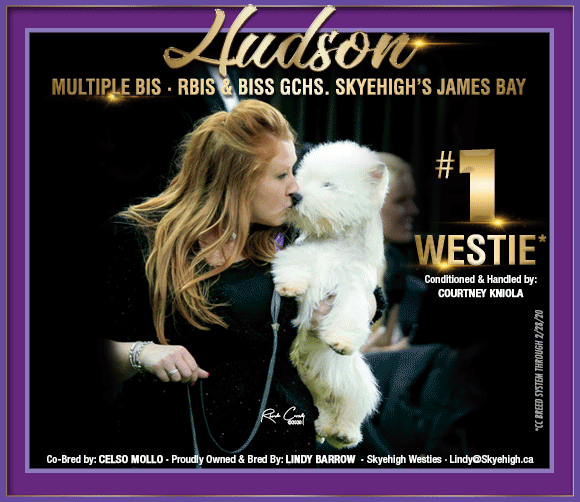One Man’s Opinion
by Ric Chashoudian
From the archives of The Canine Chronicle, December, 1991
During my judging trips, I try to compare what I am seeing today and what I was seeing thirty to forty years ago.
It seems to me that I have seen breeds come and go then come back again, and some seem to have lost it forever. In order for a breed to prosper there have to be some ‘keepers’ of these breeds. These people are usually very keen judges and/or breeders who really care about a breed, and do not mind a little controversy along the way. These keepers of the breeds are very dedicated people, usually, who do not mind sounding off and fighting for the right way. If they are not fighters, they usually get trampled and ridiculed enough so that they give up in disgust and say to hell with it.
These are things that I have noticed in my very limited judging but not so limited handling days.
The smart breeders throughout the world seem to keep things going, but these smart breeders are few and far between. It is up to the knowledgeable judges to know and reward these breeders when they do come up with the right stuff. If they are not rewarded by coming up with the right stuff it can be extremely discouraging.
We all know that there is a lot of mediocrity in the ring. Now when we talk about the right stuff, we are not necessarily talking about always great or even really good dogs; but dogs that can do what they were bred to do, or may not have the extra beauty and showmanship that makes them a winner at dog shows.
Now I can give you some examples. In the breed I am raising, Wire Fox Terriers, I have to make up my mind what pups I am going to keep for further breeding, and what pups I can let go as pets or, maybe, future show dogs depending on their care, development and whether their owners care about showing. The pups I want to keep are the ones with the basic good qualities for a Wire Fox Terrier to enable them to do what they were bred to do, which is to go to ground and pursue small vermin and with the show qualities thrown in that makes them beautiful to look at. When I start evaluating my pups at about 10 weeks of age, I make sure that they are free of any excess hair to interfere with this judgment. Breeds that are not coated can be left natural. When these pups are brought over for me to evaluate, I want to see them a little hungry and wide awake, not full of food and sleepy. If they are brought a long way in a car to be graded, they must have a chance to get over any car sickness they may have had, and to relieve themselves, and picked up after, so that they can be seen in a nice environment. The enclosure must be well-shaded and dry and with enough room to move around freely at a distance of at least 30 or 40 feet on a surface with good traction. Then I want to see these pups move around, preferably and necessarily at a trot, not running or galloping. The way I judge these pups is exactly the way I judge older dogs. The first thing I look for is carriage and temperament. The way these pups handle themselves is extremely important. Carriage is something that usually carries on through their adult life. Then I look for the fluidity of movement. How do the shoulder blades work on the move, how much extension do they have? How much freedom of movement do they have? Then I start weeding them out by taking the ones that do not please in these departments and cutting numbers of each sex down. Then I start looking for heads and length of neck, toplines, tail sets, signs of hockiness, of poor feet and pasterns, eye placement and color, ear placement and size, coat texture, markings, layback of shoulders, length of back and the general overall look and balance of the pups. All this is done fast–usually within 10 to 15 minutes–and I stick with my best picks until the next time I see the pups, which preferably is in about a month. My pups are raised by another person because I only have my older show dogs at my home.
I would prefer to watch my pups daily for short intervals, but that is not afforded to me at this time.
My pick pups will be pups that can do what they were bred to do and then I will go on from there. Now the pitfalls that start to show up are so numerous that they can hardly be counted. I will give you a few examples.
The pups c
an develop light eyes or off-colored eyes or large eyes if that is not called for in that breed; they can get too low or high or too big or small, and their coats can develop the wrong texture. Puppies can quit growing or get too big. They can develop long, or sway, or roached backs, low tail sets can creep in later in life. They get flat feet, weak pasterns, or cow hocks; temperaments can start to get soft, teeth can go overshot, undershot, or crooked. I can name hundreds of things that can happen and usually do, but at least most of these pups can do what they were bred to do if you are breeding from the right stuff.
Now, if you do not breed from the right stuff and are breeding totally for beauty, totally for heads, totally for coats, or any other reason, you may lose the right stuff.
A very good breed to use as an example to point this out would be Yorkshire Terriers. Now, this breed is a breed that I have just started watching closely for the last five or six years because I have a friend that is interested in them. When I tell you that this is a tough breed to find a good one in, I am understating the fact. [Editor’s Note: the author wrote this in 1991] I don’t know why this breed is so tough. Is it because so much emphasis has been put on coat color and texture? Is it because they don’t know whether they want a baby doll face, as they call it, or terrier type head? I’ll be damned if I know the reason. I hardly know a judge in the country who won’t agree with me that this breed is in deep trouble. If I were to venture to reason, it might be that the keepers of this breed may have given up. I will probably get some irate breeders throwing rocks at me, but this is my view on this breed in the year 1991. What I am trying to say is how important it is for these keepers of the breed not to give up the ship but to hang in there and fight. I mentioned in a prior article that I watched a tape of a poodle symposium, and Annie Clark said something that interested me. She was talking about the two distinctly different kinds or types of dogs in a given breed. She talked of the ‘chunkies’ and the ‘racey’ ones; I believe these were the words she used. These two types appear in almost every breed you can mention, which means you have two distinct types of dogs. Now the question arises of which is the correct type. Now, in my breed, the correct type lies in between. The Fox Terrier cannot be too chunky and low legged, nor can he be too leggy or refined. The trick, as I see it, is to get the beautiful combination of the two.
The chunkies usually offer good bone, good ribs, good feet, short backs, a little more laid-back temperament, and they not too hyper. Their drawbacks are being low stationed, and having coarse heads, common expressions, bulky shoulders, over-muscled rears, short necks, etc.
Now the racey ones can offer beautiful heads and expression, long necks, elegance, and style, etc. Their drawbacks can be upright shoulders, weak bone and pasterns and feet with thin pads, long backs, weak rear quarters, hockiness, straight stifles, over-angulation, etc.
Now, of course, this does not apply in all breeds but in a great majority of breeds.
In my opinion, the very successful breeders have taken these two types and somehow blended them, which is not easy. When breeding these two types, mother nature usually makes the pups look either chunky or racey, but very few and far between might come that beautiful blend of the two.
In my opinion, if you do not try to blend the two, bad things happen. You get the racey, stylish, narrow-headed with nowhere for the skulls to go but up, with bumps over the eyes. The narrow bodies with no muscle tone, the slack bodies, the bad doer’s and the hyperactive ones. Some have bad feet and legs, etc., or you get the over-muscled, big-boned, common-headed, laid back, lazy types with no class or style.
There are some breeds where these theories do not hold true but I believe that there are more that do than don’t. With air travel nowadays and all these modern things being offered now in our breeding programs like frozen and chilled sperm, etc., the best days should be ahead of us, so we can come up with the right stuff in our chosen breeds. The main thing now is for our breeders to stay open-minded and educated enough to recognize the right stuff, even if your worst enemy owns it!
Short URL: http://caninechronicle.com/?p=183997
Comments are closed














